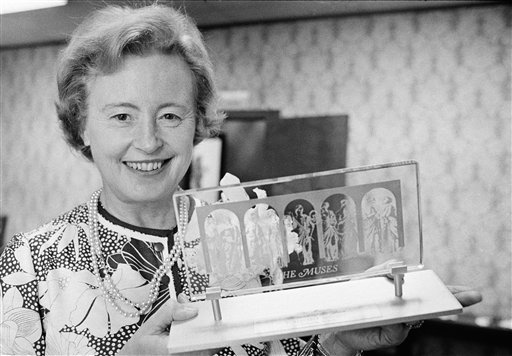News & Events

Best wishes for the 100th birthday of Margaret Burbidge
From everyone here at Elusives, we wish Margaret Burbidge our best on the year of her 100th birthday, which she will celebrate on the 12th August, 2019.
"Margaret Burbidge, née Eleanor Margaret Peachey, (born August 12, 1919, Davenport, Cheshire, England), is an English-born American astronomer and the first woman to be appointed director of the Royal Greenwich Observatory. She made notable contributions to the theory of quasars (quasi-stellar sources), to measurements of the rotation and masses of galaxies, and to the understanding of how chemical elements are formed in the depths of stars through nuclear fusion. Burbidge also championed the fight for opportunities for women in science.
Burbidge served as assistant director (1948–50) and acting director (1950–51) of the Observatory of the University of London. In 1955 her husband, theoretical astrophysicist Geoffrey Burbidge, obtained a Carnegie fellowship for astronomical research at the Mount Wilson Observatory, near Pasadena, California, U.S. Because women were then ineligible for such an appointment, she chose to accept a minor research post at the California Institute of Technology, Pasadena. In 1957 she became Shirley Farr fellow and, later, associate professor at Yerkes Observatory, Williams Bay, Wisconsin. She served as research astronomer (1962–64) and thereafter as professor of astronomy at the University of California, San Diego (UCSD).

Burbidge took a leave of absence from UCSD to serve as director of the Royal Greenwich Observatory (1972–73). Her Greenwich duties did not come with the traditional honorary title of Astronomer Royal, which instead was given to a male astronomer; Burbidge saw this as another instance of discrimination against women in the astronomical community. In 1972 she refused the Annie J. Cannon Prize from the American Astronomical Society (AAS) because, as it was an award for women only, it represented for her another facet of the same discrimination. Her action led to the formation of a standing AAS committee for the status of women in astronomy. Burbidge later became a naturalized American citizen. From 1979 to 1988 Burbidge directed the UCSD’s Center for Astrophysics and Space Sciences, where she helped develop some of the Hubble Space Telescope’s original instruments. She became a professor emeritus of the university in 1990.
In the 1950s Burbidge carried out stellar-spectra research that served as the foundation of the B2FH theory named for the formulators: the Burbidges, William A. Fowler of the United States, and Sir Fred Hoyle of Great Britain. This theory, published in 1957, provided a revolutionary explanation of the origin in stars of all the elements in the periodic table from helium to iron, starting with the lightest element, hydrogen. Her publications include Quasi-Stellar Objects (1967), with Geoffrey Burbidge. She was elected a fellow of the Royal Society of London in 1964. She served as president of the AAS (1976–78) and of the American Association for the Advancement of Science (1983). In 2005 Burbidge and her husband were jointly awarded the Gold Medal of the Royal Astronomical Society."
— Via Encyclopaedia Britannica


